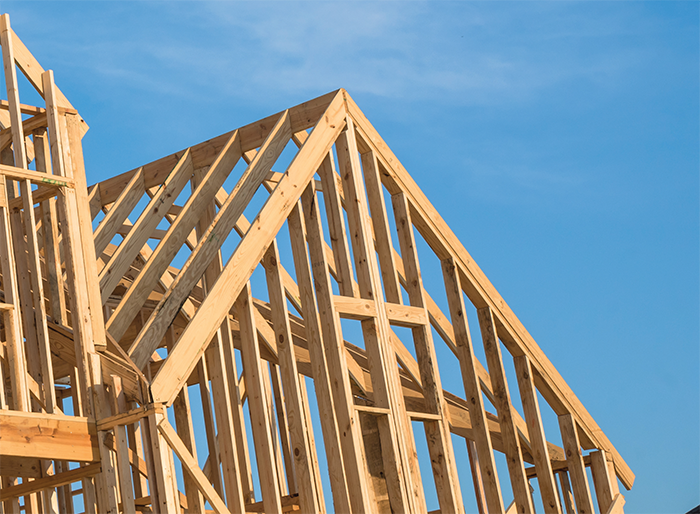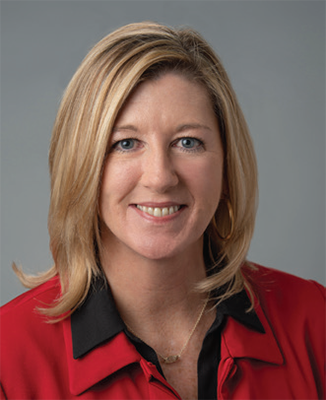
A softening housing market won’t dampen workforce needs. By Alicia Huey
A softening US housing market is not expected to curb the residential construction industry’s need for additional skilled workers. An aging workforce and an insufficient supply of housing in the United States will offset a downturn in the housing market driven by high mortgage interest rates.
The National Association of Home Builders (NAHB) is engaged in a multifaceted strategy designed to address the labor shortage in the coming years. It is not an easy task. The effort to meet the workforce needs of our industry faces significant challenges, including:
- The large cohort of Baby Boomers who are retiring from jobs in residential construction,
- A smaller number of immigrants being allowed into the country on work visas, and
- Record-low participation rates among the working-age population.
These hurdles are daunting, and it is clear that no one solution will be sufficient to overcome the industry’s skilled labor shortage.
That’s why NAHB is putting energy into several workforce development initiatives. We’re reaching out to young people, and the parents and counselors who participate in career decisions, and highlighting the satisfaction and good pay that come with a career in residential construction. We’re partnering with educators and policymakers to make sure that schools continue to invest in technical training. We’re pushing back on the misperception that a four-year college education is the only path to success in America.
 NAHB’s workforce development arm, the Home Builders Institute (HBI), last year conducted research to better understand the skilled labor needs of the residential construction industry. That research, conducted in concert with NAHB economists, found that the industry will need to hire 2.2 million workers over the next three years in order to meet industry demand. And while some softening of the housing sector is likely to come with the overall economic slowdown, it is not expected to solve the nation’s chronic shortage of skilled workers.
NAHB’s workforce development arm, the Home Builders Institute (HBI), last year conducted research to better understand the skilled labor needs of the residential construction industry. That research, conducted in concert with NAHB economists, found that the industry will need to hire 2.2 million workers over the next three years in order to meet industry demand. And while some softening of the housing sector is likely to come with the overall economic slowdown, it is not expected to solve the nation’s chronic shortage of skilled workers.
With nearly 400 programs across 46 states, HBI provides free pre-apprenticeship training and certification programs to middle and high school students, transitioning military personnel and veterans, and other underemployed or displaced young people and adults.
HBI has begun opening new BuildStrong Academies in high-growth markets around the United States. The academies use HBI’s industry-recognized curriculum, which meet US Department of Labor criteria, and work with industry partners and charitable foundations to provide even more no-cost training for the skilled construction trades. BuildStrong Academies have opened in Denver, Colo., Orlando, Fla., New Orleans, La., Houston, Texas, and Phoenix, Ariz.
Recruiting, training, and encouraging more women to join the residential construction industry is also part of the workforce shortage solution. While numbers have edged higher in recent years, women still only comprise about 11 percent of the current construction workforce. Through education, professional development and networking opportunities, NAHB’s Professional Women in Building (PWB) Council helps women to acquire and develop invaluable leadership and business management skills that help boost career success. As a former PWB Council chair, I couldn’t be prouder of the work being done by PWB councils at the local, state and national levels to strengthen the role of women in building.
NAHB’s student chapters at high schools and colleges and its not-for-profit National Housing Endowment are expanding educational opportunities for youth who are considering careers in the home building industry. And programs with SkillsUSA, the Boys & Girls Clubs of America, and the Girls Scouts of America are introducing younger children to construction skills and the range of rewarding careers available in the building trades. All of these programs are part of a broad strategy designed to help us close the skilled labor gap and create the workforce needed in the near future and the long term.
The lack of available workers is one of the most significant challenges builders face and it increases the cost of building homes, makes it more difficult to complete projects on time and, ultimately, drives up the cost of housing. Our chronic labor shortage is contributing to the nation’s housing supply problem and to the ongoing affordability crisis.
NAHB economists, citing government data, noted recently that the housing market needs 1.5 million units to close the current housing gap in the United States and bring current vacancy rates – at their lowest readings in decades – back to long-running equilibrium levels.
Until we address the labor shortage, we cannot resolve the housing supply shortfall or the affordability problem.
I encourage anyone interested in this issue to check out the resources available at nahb.org/workforce. These are resources that home builders and others can use to raise awareness about the skilled labor shortage and to highlight the options available to young people just now choosing a path. They include facts about the extent of the problem, information about career opportunities, compensation ranges for specific building trades, and advice about where to turn for job training.
The housing industry is hiring. I hope you will join us in projecting that message to help our industry thrive in the years to come.
Alicia Huey
www.nahb.org
Alicia Huey, NAHB’s 2023 Chairman of the Board of Directors, is a Birmingham, Ala.-based custom home builder and developer with more than 30 years of experience in the home building industry.
The National Association of Home Builders (NAHB) represents the largest network of craftsmen, innovators and problem solvers dedicated to building and enriching communities.